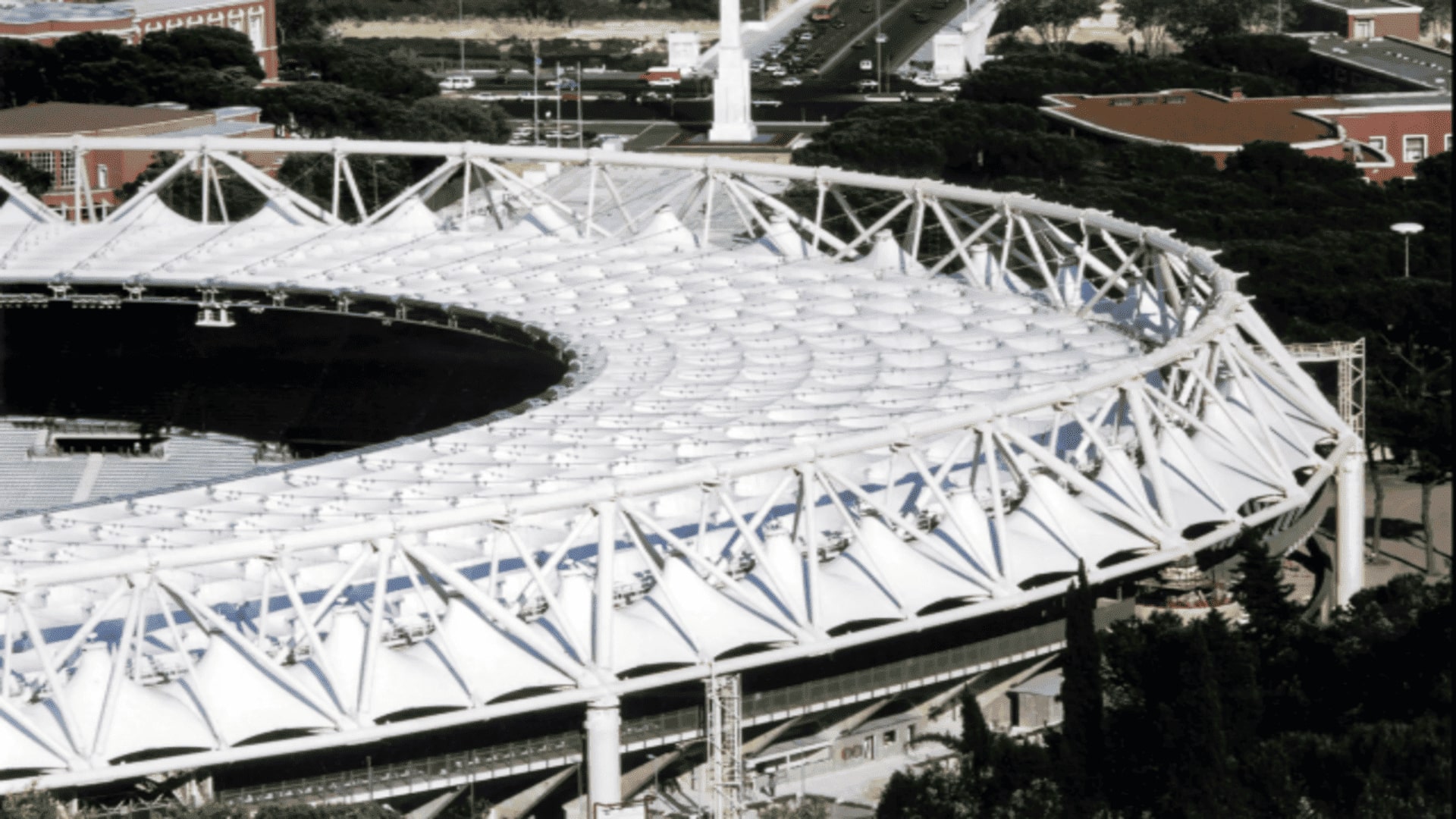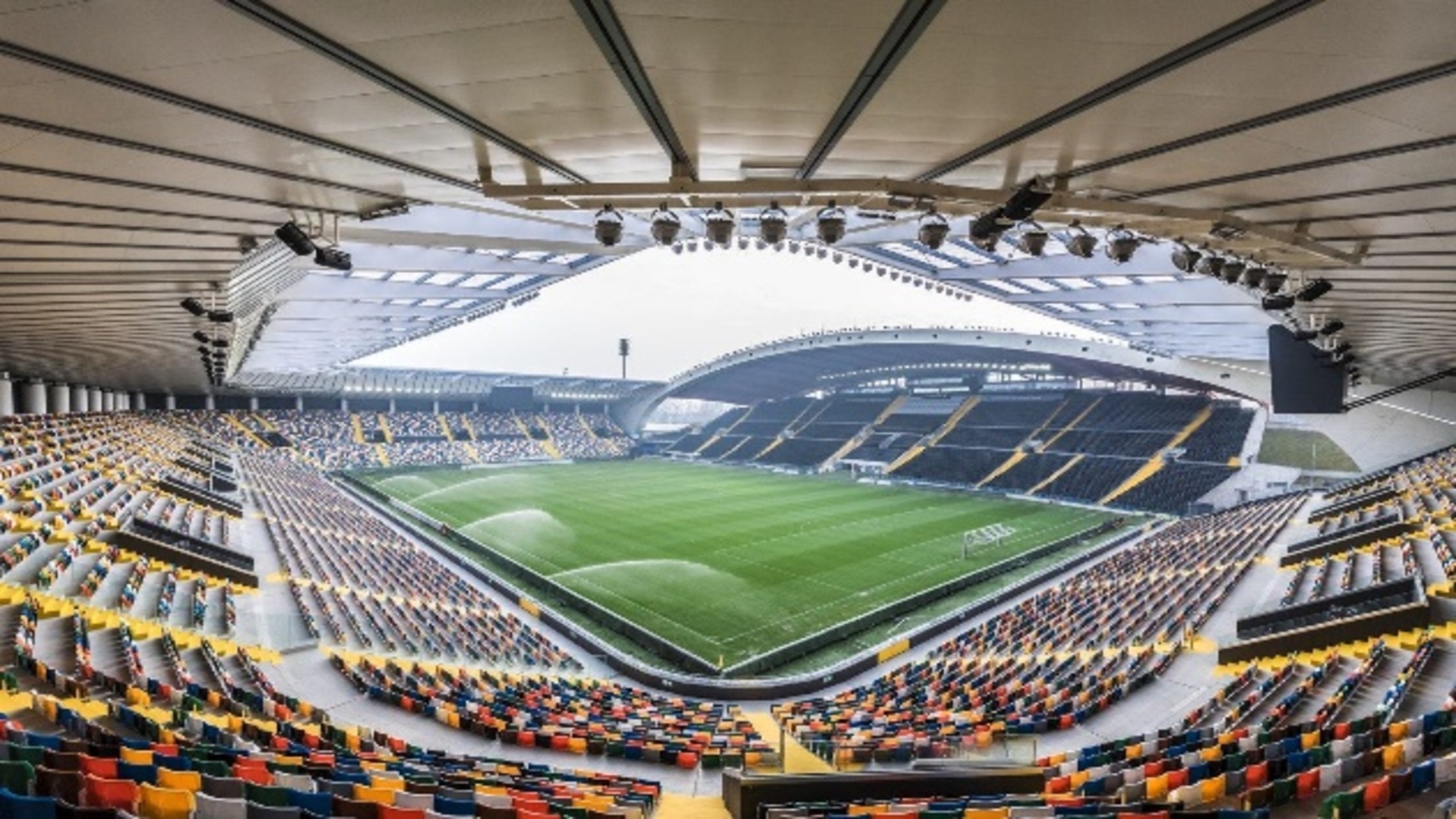“Stadiums aren’t what they used to be.” It might sound like a nostalgic remark, but it actually signals a positive change. Stadiums are no longer just places to watch matches. They’re evolving into increasingly multifunctional and sustainable spaces that often breathe new life into the neighborhoods and cities around them, thanks to urban regeneration projects.
1 – Al Bayt Stadium, Doha
The Al Bayt Stadium, the Al Khor sports complex, located 40 km north of Doha, is one of the most innovative facilities in the world, designed to host the 2022 FIFA World Cup.
Webuild constructed this state-of-the-art stadium (shaped like a Bedouin tent) by combining sustainability, innovation, and respect for local culture. With a capacity of 60,000 spectators, it features an advanced air-conditioning system and has earned two 5-star GSAS certifications, exceeding FIFA’s requirements.
The Qatar stadium project also included the construction of auxiliary buildings and an energy center, using technologies such as BIM to ensure efficiency and high quality throughout the building process.
2 – Stadio Olimpico, Rome
The Rome Olympic Stadium (Stadio Olimpico), completed in 1953, underwent a major renovation for the 1990 FIFA World Cup, led by Webuild.
The project involved rebuilding the structure in reinforced concrete, bringing the stands closer to the pitch, and installing a white tensile roof that gave the stadium a modern and functional look.
The capacity of the Roma stadium increased from 54,000 to over 82,000 spectators, making it one of the 15 largest stadiums in the world at the time. Today, it stands as a landmark venue for football, athletics, and rugby in Europe.
3 – Tottenham Hotspurs Stadium, London
The Tottenham Hotspur Stadium (also known as New White Hart Lane or Tottenham Stadium) aims to be a low-impact, environmentally friendly venue. Both teams and all staff are required to arrive using zero-emission transport, while single-use plastics inside the stadium have been replaced with recyclable paper and cardboard.
Additionally, fans who choose sustainable transport options receive discounts, and the club commits to planting trees nearby to offset remaining emissions, making the entire facility a model of sustainable sports infrastructure.
4 – London Stadium (former Olympic Stadium), London
West Ham has transformed the former London Olympic Stadium, built for the 2012 Games, into its new home, blending the club’s sporting heritage with a large-scale urban renewal project.
The West Ham stadium renovation and the urban revitalization of the Stratford district created public spaces, residential buildings, and modern infrastructure, turning a historic urban void into a sustainable and functional sports and social hub.
5 – Friuli Stadium, Udine
The New Friuli Stadium in Udine is an example of a modern and sustainable facility, equipped with photovoltaic panels, thermal and acoustic insulation, natural ventilation, and solar radiation control systems.
Its trigeneration plant, which also uses vegetable oil, ensures efficient energy use. Multifunctional by design, the stadium can host both sporting and non-sporting events, combining technological innovation with environmental responsibility.






